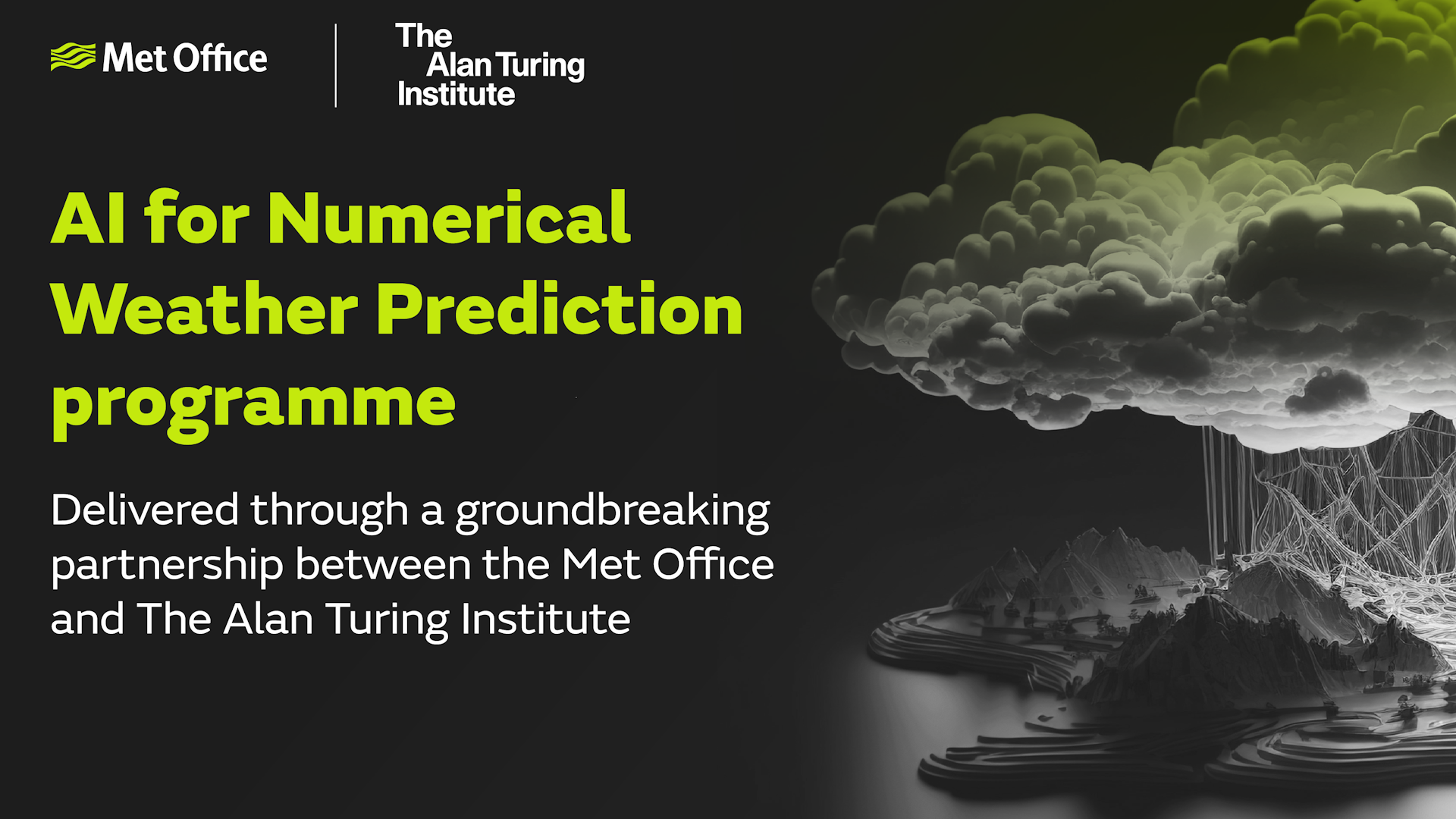Innovating our world-leading science and services
We exploit cutting-edge and emerging technologies, pushing new boundaries to deliver our renowned weather and climate science and services in a changing world.
Our Research and Innovation Strategy
Our Research and Innovation Strategy aims to extend the frontiers of weather and climate knowledge through pioneering research. It also strives to advance our world-leading people, partnerships and infrastructure for the weather and climate community, as well as to help risk-based decision-making. Additionally the strategy introduces our National Capability, which combines the driving forces of science, technology, and observations to deliver our science and services, support national and international needs, and respond to emergencies.
Artificial Intelligence for Numerical Weather Prediction

Artificial intelligence (AI) has the potential to revolutionise weather forecasting. In October 2023, we announced a groundbreaking partnership with the Turing Institute to develop AI models for improved forecasting, including for extreme weather events, helping to save lives and protect critical national infrastructure.
Transforming environmental science through digital twinning
The Twinning Capability for the Natural Environment (TWINE) programme is being delivered by the Met Office in partnership with the Natural Environment Research Council (NERC). It aims to harness the potential of digital twinning technology to transform environmental science.
Supercomputing
The Met Office Cray XC40 supercomputing system makes 14 thousand trillion calculations per second, allowing it to take in 215 billion weather observations from across the world every day. These are used as a starting point for UK and global weather forecasts.
With greater capacity and even higher performance, our new supercomputing system will take weather and climate research and operations to the next level.
Its benefits will include:
- more accurate warnings of severe weather, helping to build resilience and protect the UK population, businesses and infrastructure from the impacts of storms, floods, heatwaves and droughts.
- enabling groundbreaking new climate change modelling, developing the potential of our expertise in climate science to help build a resilient, low carbon economy.
- ensuring the UK can continue to lead the field in weather and climate science and services, helping it to reach Net Zero emissions by 2050.
- securing the Met Office and the UK’s prominent, authoritative voice, directly contributing to the UK’s global reputation for scientific research and innovation.
- being powered through use of 100% renewable energy and market leading energy efficiency, saving thousands of tonnes CO2 in the first year of operational service alone.
An increase in supercomputing capacity will lead to improved understanding of expected future rainfall trends and extremes, as well as changes to sea level, along with their impacts at a local level. This will aid decision-making around flooding and the associated damage to property, disruption to infrastructure and services in present day and future climate.
Observations from space
We collect weather data from space with our geo-stationary and polar orbiting satellites. Imagery from our satellites is processed and analysed and used alongside our other millions of observations to provide a wealth of information about the atmosphere and the surface of the earth.
Numerical Weather Prediction (NWP)
We are at the cutting-edge of modelling research and development. Our operational NWP systems support the production of reliable and accurate weather forecasting and climate projections for our customers. Our Unified Model is widely used for NWP, seasonal forecasting and climate modelling with forecast times ranging from a few days to hundreds of years.
Evolving our forecasting
Traditionally we took a deterministic approach to global and UK forecasting, using a computer model to provide a single outcome for each forecast. In recent years, we have used an ensemble forecasting approach in which the model is run multiple times to produce forecasts reflecting a range of possible weather scenarios and how likely they are. We are the first National Meteorological Service to move to fully ensemble-based global and regional forecasting, a move which will particularly benefit those needing a range of possibilities of extremes, regardless of how unlikely they are to occur.
Our innovative services
We provide weather and climate data, forecasts and research and consultancy services to government, transport, business and industry in the UK and around the world to protect lives, infrastructure and the natural world. Through our trusted and established partnerships we give crucial advice and support that leads to effective action being taken when it matters.


